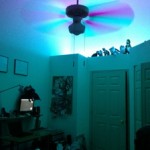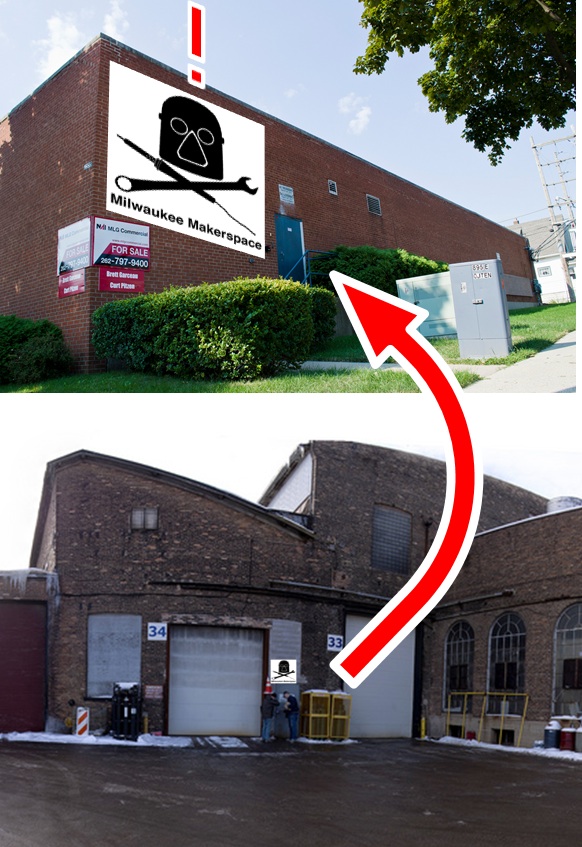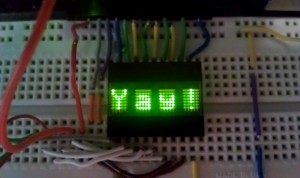My roommate’s Brewers penguin lost an eye last week. This week, we gave him a better one.
Bonus: I used blue and gold wires. Go Brewers!
Be a part of a hacker/builder community where ideas are shared, innovation is fostered and the maker experience is hands-on.
Join us Tour the Space
This gallery contains 4 photos.
My apartment has sub-par to poor lighting. Combine that with our lease’s “no painting walls” policy and you’ve got a one-way ticket to Drab-ville. Many moons ago I planned to replace the over-cabinet lighting in our kitchen with RGB LEDs controlled by Arduino, but I never found the motivation to actually do it. Then one […]

Milwaukee Makerspace is moving! Our new home will be 2555 South Lenox Street in Bay View! Over the next few weeks we’ll be packing up our soldering irons and bench grinders, loading them into our Power Wheels (OK, not really) and hauling them 1.5 miles over to a newly renovated, 16,000 square foot building. We expect to be moved in by Jan. 1, 2013. We’re very excited and we’ll be sharing more news as it develops. Contact us at info {at} milwaukeemakerspace.org with any questions or comments!
Milwaukee Makerspace’s new building at 2555 Lenox St. used to be the home of a data center and had two computer rooms, each with a raised floor. On Saturday, 10/27/12 several members got together and removed the last of the tiles and posts.
Roughly 1,000 tiles, each weighing 18 lbs., were removed from the west room and stacked in a dumpster for recycling. The west room took about 90 minutes to complete with 7-10 people! Thanks to everyone who turned out and we’ll be posting more news as the building comes together!
Anyone who’s ever visited Makerspace knows that the ‘Library’ is home to tons and tons of stuff. Component parts, IC chips, belts, pulleys, batteries, etc. Occasionally I lose myself in there for a few hours and just explore the shelves. This is a post about one of my more interesting discoveries.

I came across a whole bag of these in the LED bins. They’re 1″ wide, four-digit alphanumeric displays. Each character consists of a 5 mm tall, 5×7 LED dot matrix display. The device comes complete with on-board RAM and an ASCII decoder capable of displaying up to 128 different characters. It’s even possible to dim the brightness. I’m also partial to the color green.
The major drawback I’ve found is the number of pins required for use. The thing has seven data pins and the extended features for writing/reading/displaying require a ton of connections. I used all but four of my Arduino Uno’s I/O pins while tinkering with it. You’re probably better off using a LCD display or something with serial data support, but these are still small and numerous in our ‘Space so they’re worth toying with. Also there’s been a few other people who played with these and posted their findings online. I’m seriously considering building a small desk clock around one or two of these in the future.
If you’re interested in using one of these displays on your next project, I’d suggest reading the blogs by these fine folks here:
http://buzzdavidson.com/?p=148
http://dorkbotpdx.org/blog/wardcunningham/yow_revisited_in_txtzyme
http://gorgusgfx.se/?page_id=62 (I think this is in Swedish, but the code still works!)